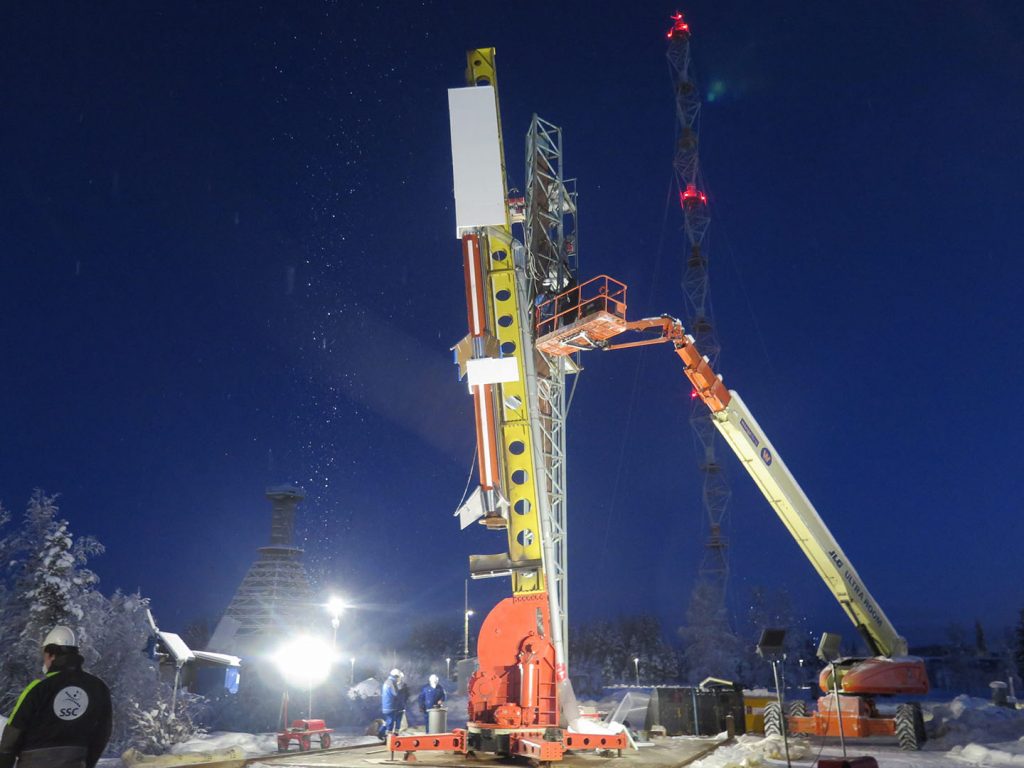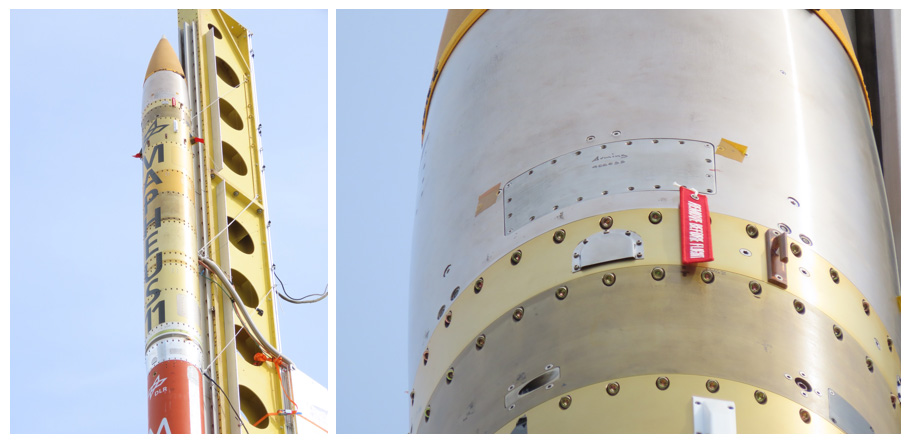MAPHEUS 9 rocket launched on 29 January. Read the whole article: Another MAPHEUS launched – all systems worked perfectly
MAPHEUS 9
The name of the MAPHEUS research rocket stands for “Materialphysikalische Experimente unter Schwerelosigkeit” (material physics experiments at zero gravity).
Every year the German Aerospace Center (DLR) launches a MAPHEUS research rocket with a payload developed and supervised by the Institute of Materials Physics in Space (MP). The secondary payload is managed by the Institute for Aerospace Medicine.
The Mobile Rocket Base (MORABA) of Space Operations and Astronaut Training (RB) provides the payload support systems and launch service of the sounding rocket which – in case of MAPHEUS 9 – provides a microgravity environment for 6 min above 100 km altitude for its four experiments onboard.



